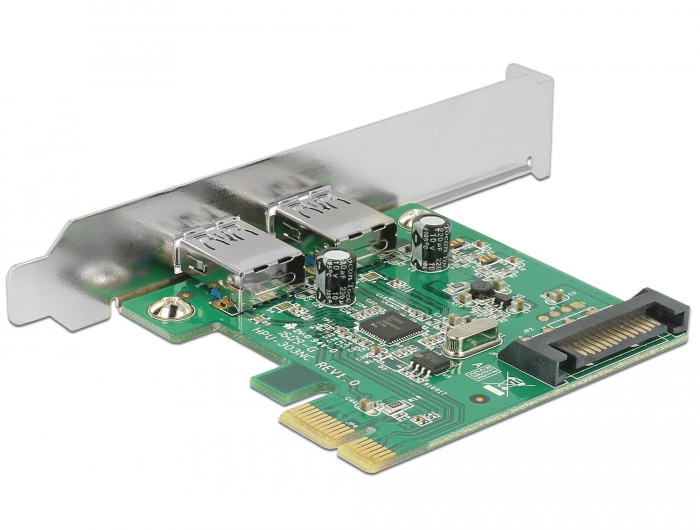
- USB 3.0 PCI EXPRESS CARD FOR MAC SERIAL
- USB 3.0 PCI EXPRESS CARD FOR MAC PRO
- USB 3.0 PCI EXPRESS CARD FOR MAC PC
- USB 3.0 PCI EXPRESS CARD FOR MAC SERIES
- USB 3.0 PCI EXPRESS CARD FOR MAC WINDOWS
USB 3.0 PCI EXPRESS CARD FOR MAC SERIES
USB 3.0 PCI EXPRESS CARD FOR MAC PC
As of 2006, ASUS had also replaced the PC Card slot with an ExpressCard slot on many of its new models.In June 2012 Apple discontinued the 17-inch model and no further Macbooks have offered an ExpressCard slot.
USB 3.0 PCI EXPRESS CARD FOR MAC PRO
At the JApple Worldwide Developers Conference the company announced that the 15-inch and 13-inch MacBook Pro models would replace the ExpressCard slot with a Secure Digital card slot, while retaining the ExpressCard slot on the 17-inch model. included single ExpressCard/34 slots in every MacBook Pro notebook computer from January 2006 through June 2009. Fujitsu-Siemens began shipping systems with ExpressCard in mid-2005.Latitude E-Series 6000 have ExpressCard|54 slots), Studio, Vostro and XPS Laptop product lines. The D820/D830 have both ExpressCard and PCMCIA card slots. Dell Computer also incorporates this in their Precision (the 17 in models have them exclusively, the 15 in Precisions have both express card and PCMCIA Card slots), Inspiron, Latitude (Latitude D-series have PCMCIA card slots.IBM integrated the slot into their flagship ThinkPad T43 in May 2005.Hewlett-Packard began shipping systems with ExpressCard in November 2004.Some laptop computers do not have an ExpressCard slot.Ī mobile broadband modem integrated into ExpressCard 34Īn ExpressCard slot was commonly included on high-end laptops from the mid 2000s to the early 2010s: More recently, virtually all laptop equipment has 480 Mbit/s Hi-Speed USB 2.0 ports, and most types of peripheral which formerly used a PC Card connection are available for USB or are built-in, making the ExpressCard less necessary than the PC Card was in its day.


When the PC Card was introduced, the only other way to connect peripherals to a laptop computer was via RS-232 and parallel ports of limited performance, so it was widely adopted for many peripherals. PCMCIA devices can be connected to an ExpressCard slot via an adapter. The ExpressCard FAQ claims lower cost, better scalability, and better integration with motherboard chipset technology than Cardbus. The ExpressCard standard specifies voltages of either 1.5 V or 3.3 V CardBus slots can use 3.3 V or 5.0 V. The ExpressCard has a maximum throughput of 2.5 Gbit/s through PCI Express and 480 Mbit/s through USB 2.0 dedicated for each slot, while all CardBus and PCI devices connected to a computer usually share a total 1.06 Gbit/s bandwidth. The major benefit of the ExpressCard over the PC card is more bandwidth, due to the ExpressCard's direct connection to the system bus over a PCI Express ×1 lane and USB 2.0, while CardBus cards only interface with PCI. If the device is listed with an error, follow the instructions on the website to reinstall the drivers.The older PC Cards came in 16-bit and the later 32-bit CardBus designs. If you do not see the USB controller card listed in Device Manager please see this FAQ.
USB 3.0 PCI EXPRESS CARD FOR MAC SERIAL
Check to see if your device is listed under Universal Serial Bus controllers.
USB 3.0 PCI EXPRESS CARD FOR MAC WINDOWS
Press the Windows key + R, type devmgmt.msc, and press Enter to open Device Manager. When you test the USB device and controller card, it is recommended that you do the following: When you test your cables, it is recommended that you do the following: Ideally, you should test a component that you know works in another setup. Use a different USB cable, device, and controller card in your setup to see if the problem persists. Use the USB cable, device, and controller card in another setup to see if the problem is with the components or the setup. To test your setup components, try the following: You can test to make sure that the following components are working correctly and are not the source of the issue: When you troubleshoot issues with a USB controller card, there are some quick tests that you can complete to rule out potential problems. If used with PCI Express Gen 2.0 enabled computers, the max throughput is 5 Gbps. If used with PCI Express Gen 1.0 enabled computers, the max throughput is 2.5 Gbps.

The maximum throughput of this card is limited by the bus interface. IDC (20 pin, USB 3.0, Motherboard Header)


 0 kommentar(er)
0 kommentar(er)
